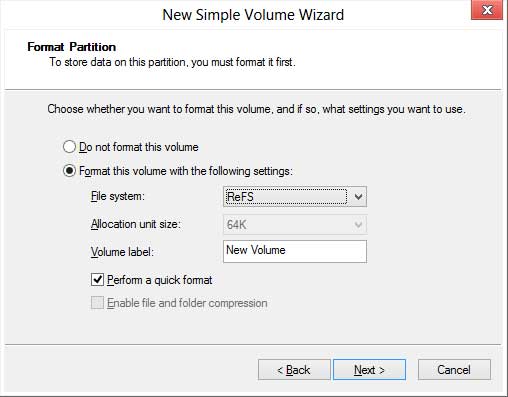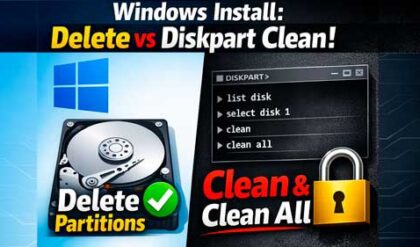Will the upcoming ReFS (Resilient File System) replace the aging NTFS file system?
As I’m sure you know Microsoft Windows is not the only operating system used on computers but it is the most popular by far. Other operating systems include UNIX, Linux, MacOS, Android and so on. One thing these operating systems have in common is that they all have some type of file system.
A file system is what the operating system uses to structure data on a disk and keep track of files for storage and retrieval. Without a file system data would just be grouped together without any type of organization or naming convention for specific files or directories. Different file systems have their own attributes when it comes to speed, security, file size and so on. File systems are most commonly used on hard drives but other devices such as flash drives, CDs & DVDs, and backup tapes.
Some of the more commonly used file systems in Windows include FAT (File Allocation Table), FAT32 (newer version of FAT) and NTFS (New Technology File System). FAT and FAT32 are not really used anymore except maybe in on things like flash drives. NTFS is the most commonly used Windows file system today and offers faster access speeds, better security, encryption, reliability and larger file size than the others. NTFS has been around since Windows NT back in 1995 so it’s time for something new!

This is where the new Resilient File System (ReFS) comes into play. ReFS offers many new features and improvements to make it the logical choice to replace NTFS in the near future. ReFS is still a work in progress and is going through different versions with features being added and sometimes even being removed so what you read here today might not be completely accurate tomorrow. An example of this is that ReFS was supported in Windows 10 and now it seems as though Microsoft is changing its mind and will remove it or maybe just offer it in the new Windows 10 Pro for Workstations edition. So with that said here are some of the features of the new ReFS file system.
- The file structure will be organized in a B+-tree format which consists of a root, internal nodes and leaves.
- ReFS will have a high tolerance to failures compared to NTFS.
- Copy-on-Write feature (COW) – Since copied files are duplicated but not modified, it is not necessary to create a new file because the file can be shared between the copy and the original.
- ReFS is designed to maximize data availability and provide data integrity by means of resiliency to corruption.
- Detect pending file corruption by using checksums for metadata.
- When integrated with Windows Storage Spaces it can automatically repair detected corruptions using the alternate copy of the data – Currently the only way to use ReFS with Windows 10 is with Storage Spaces.
- Has a data integrity scanner called a scrubber that scans the volume and identifies latent corruptions and then triggers a repair of the corrupt data proactively.
- No more need for chkdsk since ReFS is an auto correcting file system.
- Improved functionality for virtual machines (VMs) – Uses block cloning and it only needs to create a new copy of metadata on the drive and point it at an existing data on the drive.
- Can support extremely large data sets (millions of terabytes) with no negative impact on performance.
- Maximum file size of 35 PB (petabytes)
- Maximum volume size of 35 PB (petabytes)
- File names can be up to 32,768 characters long
- Compatible with full-disk BitLocker encryption but there is no support for related features like per-file compression or encryption.
- With Windows Server 2016, you can format volumes with ReFS rather than of NTFS
- Windows cannot boot from a ReFS file system yet.
For additional training resources, check out our online IT training courses.
Check out our extensive IT book series.






